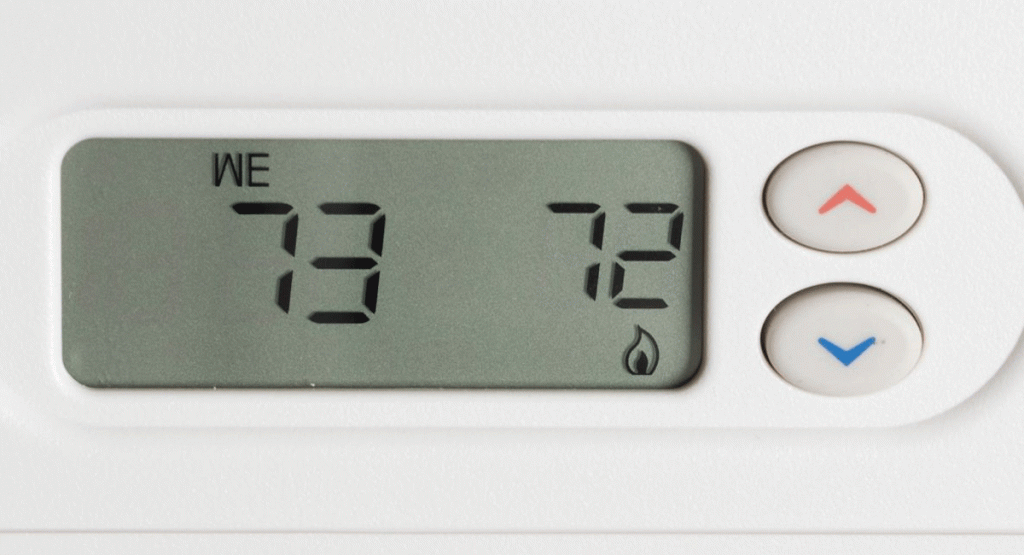Fluctuating in-house temperatures can make your house unbearable, and your thermostat might just be the culprit. Moving your thermostat to an ideal location can be the solution to your home feeling too hot or cold.
Moving your thermostat may even ease the burden of a hefty utility bill. If you’re into DIY projects, you should definitely make this your next adventure. So, how can you move your thermostat? Let’s find out!
Why Should You Move a Thermostat?
A thermostat essentially regulates an HVAC system’s working mechanism by sensing whether a room’s temperature is above or below the temperature you set as ideal. Digital thermostats contain thermistors to measure air temperature changes, while smart thermostats use sensors to detect temperature changes.
You can also move your thermostat if you’ve just remodeled your house and it looks misplaced or ugly.
Incorrect Placement
The proper placement for your thermostat will prevent you from feeling uncomfortable in your own house. If your home feels uncomfortably hot or cold despite having a working HVAC unit, then it might be time to move your thermostat.
There are so many things that can go wrong when choosing the best place for your thermostat. If you moved into your home or apartment and found the current thermostat somewhere breezy, like near a door, window, or air vent, then it’s time to change its location.
Remember that your thermostat will always pick up a cooler temperature in these areas because of the draft that passes through, so your HVAC system won’t shut off.
If your thermostat is outside your home or on a west-facing wall, it will always read higher temperatures, especially during the summer. However, during the winter, the thermostat will read the outside air temperature, and you may end up living in a furnace!
You may need to move your thermostat if it’s placed in an abandoned room. Most abandoned rooms are colder than the rest of the house, so your thermostat averages won’t resonate with the whole house.
How to Prepare to Move a Thermostat

Supplies
- Small pliers
- Screwdriver set
- Cable clips
- Drywall
- Drill
- Multimeter
- Something with a hook
Choose the Best Location
Due to its function, you must place your thermostat in an optimum position to represent the average temperature in your house. Ideally, thermostats should be placed on an interior wall in a central area in your home.
You can also place your thermostat in rooms like the living room, where people frequently come and go.
Cut Off the Power Supply to the Thermostat
This step should precede every step when working with electrical appliances in order to prevent the risk of electrocution! Start by switching off the thermostat and then turning off your HVAC system at the breaker box. Wait a minute for all the currents to pass through and use a multimeter to check for residual electric current.
Moving the Thermostat
Detach the Thermostat
Once you’ve cut off the power supply, you need to detach your thermostat with a screwdriver. The best way to prepare yourself for the new installation is to take pictures of every step during uninstalling. Use the small pair of pliers to disconnect the wires and remove both the bracket and its housing.
Prepare the New Thermostat Location
You can move your thermostat to an adjacent surface or a different room altogether. All these are doable, but you might need some electrical technician’s experience if you want to move your thermostat to another room.
Preparing a new location means drilling holes for the thermostat in your new area. If it’s an adjacent wall, then all you need is a fish hook to install wires and pull them to where the thermostat should be.
If you’re relocating your thermostat to a new room, then you’ll need to run new wiring to the new space and then drill the holes. The most economical options for you would be running your wires up your exterior walls and into the new room. You can even paint it to blend in with your wall color.
Install the Thermostat
This is the best time to upgrade your thermostat if you’re using an older version. Once you’ve run the wires to the current location, all you need is the photos you took to install and configure the thermostat into the correct ports as the previous location.
If you’ve decided to upgrade, use the new thermostat’s user manual to guide you during the installation process. All you need for the new installation is a screwdriver of your choice and a multimeter after you repower your thermostat.
Repair Old Thermostat Location
Remember that installing a thermostat requires drilling holes, which means you left drill marks when you uninstalled your old thermostat. Use drywall to cover the holes and repaint the area for a seamless aesthetic.
Getting Help from a HVAC Specialist
DIY projects can be fun and cost-saving, but it’s good to know when to call an HVAC professional. If you aren’t a certified electrician and want your house or apartment to look professionally done, then look for an electrical technician and an HVAC specialist near you.
Conclusion
Remember that your thermostat’s temperature should be what everyone in the house finds comfortable. Moving a thermostat can cost you very little if you’re doing it yourself, but ensure that you use the correct tools to do the relocation.
Moving your thermostat to a better location is beneficial because your utility bills will certainly go down, and your house’s temperature won’t fluctuate as often. Once everything is done, you should find it easier to relax in your home!
